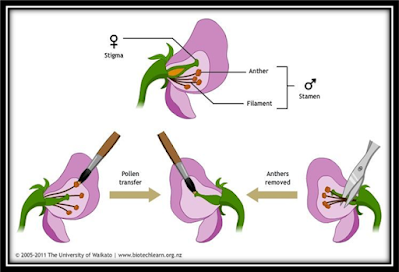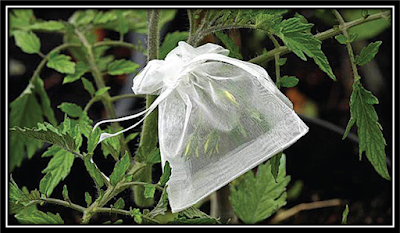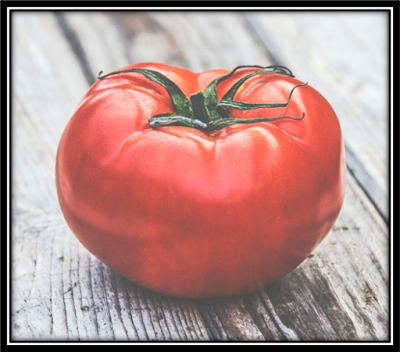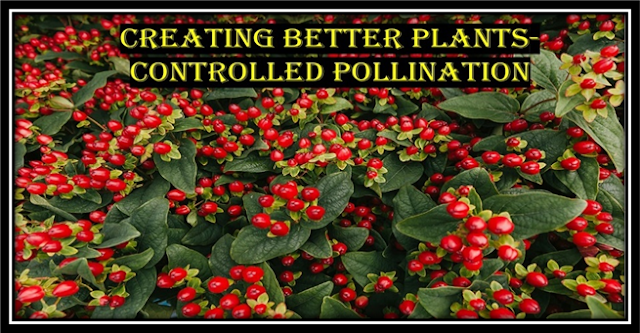Humans have cultivated plants for thousands of years to provide food, medicine, and aesthetic pleasure. However, obtaining the ideal plant type can be difficult and time-consuming. This is where controlled pollination, also known as artificial hybridization, comes into the picture.
Controlled pollination is the intentional transfer of pollen from one plant to another to generate a new plant variety with desired characteristics. This approach has transformed plant breeding, allowing for new plant types with higher yields, disease resistance, and tolerance to environmental stress.
But what is controlled pollination, and how does it work?
This article will look at the science and art of controlled pollination and the advantages and disadvantages of this fascinating process.
So, if you are interested in the world of plants and plant breeding, read on.
What is Controlled Pollination?
Controlled pollination, also known as artificial hybridization, is a method used in plant breeding to create new plant varieties with specific desired characteristics. This is done by intentionally introducing pollen from one plant to another, usually from different species or varieties.
Controlled pollination, also known as artificial hybridization, is a method used in plant breeding to create new plant varieties with specific desired characteristics. This is done by intentionally introducing pollen from one plant to another, usually from different species or varieties.
It can be done manually by a breeder or through technology such as hand-held pollination tools or drones. The resulting offspring, called hybrids, have a combination of genetic traits from both parents.

Some of the pioneers of controlled pollination in plants
- Gregor Mendel (1822-1884): An Austrian monk considered the “Father of Modern Genetics.” Mendel’s experiments with pea plants laid the foundation for our understanding of inheritance and the transmission of traits from one generation to the next.
- Luther Burbank (1849-1926): An American horticulturist who is considered one of the greatest plant breeders of all time. Burbank developed hundreds of new plant varieties through controlled cross-breeding and hybridization, including the Russet Burbank potato, the Shasta daisy, and the Santa Rosa plum.
- Nikolai Vavilov (1887-1943): A Russian botanist and plant breeder who was a pioneer in the field of seed collecting and plant genetic diversity. Vavilov’s work helped to demonstrate the importance of preserving genetic diversity in crops and laid the foundation for the modern science of plant breeding.
- Norman Borlaug (1914-2009): An American agronomist who is often referred to as the “Father of the Green Revolution.” Borlaug developed high-yielding, disease-resistant wheat varieties that helped to increase food production in many developing countries, reducing the threat of famine and improving the lives of millions of people.
These pioneers of controlled pollination in plants helped to lay the foundation for the science of plant breeding. They paved the way for the continued development of new plant varieties that are better adapted to changing environmental conditions and more resilient to pests and diseases. Their work continues to inspire and guide plant breeders today as they work to ensure food security and support sustainable agriculture around the world.
Steps in controlled pollination
- Selection of parent plants: The first step is to select the two parent plants used for the controlled pollination process. The parent plants should have desirable traits that the breeder wants to combine, such as high yield, disease resistance, or tolerance to environmental stress.
- Emasculation: The next step is to remove the male reproductive parts of one of the parent plants to prevent self-fertilization and ensure that only the desired pollen will fertilize the ovules.
- Pollination: The next step is to manually transfer the pollen from the male parent plant to the stigma of the female parent plant. This is usually done using a brush or a pipette to apply the pollen directly to the stigma.

4. Covering of flowers: Once the pollination has been done, the flowers can be covered with bags to prevent contamination from other pollen sources.

5. Harvesting of seeds: After pollination, the seeds will form and mature in the fruit. Once fully developed, they can be harvested and stored for planting.
6. Germination and growth of seedlings: The harvested seeds can then be germinated and grown into seedlings. These seedlings will grow into the new hybrid plants, which will possess traits from both parent plants.
7. Evaluation and selection: The next step is to evaluate the new hybrid plants to determine which ones have the desired traits. The selected plants can then be used for further breeding programs or commercial production.
These steps help to ensure that the controlled pollination process is successful and produces plants with the desired traits. You can try these steps through the simulations via SimuLab.
Example:
An example of artificial hybridization in plants is the breeding of hybrid tomatoes. Tomato breeders often use controlled pollination to create new tomato varieties with improved yields, disease resistance, and tolerance to environmental stress.
For example, a breeder might choose two tomato varieties, one with high yield and one with disease resistance. The breeder would then remove the male reproductive parts from the flowers of the high-yield variety to prevent self-fertilization. Next, the breeder would manually transfer the pollen from the disease-resistant variety to the stigma of the high-yield variety. The resulting seeds would grow into hybrid tomato plants with high yield and disease resistance.
These hybrid tomato plants can then be evaluated and selected for further breeding programs or commercial production. Through controlled pollination and selection, the breeder can refine the desired traits in the offspring, creating new tomato varieties that meet the specific needs of farmers and consumers.
This is just one example of artificial hybridization in plants. Controlled pollination is used in many other crops, such as maize, rice, cotton, and many others, to create new plant varieties with improved yields, disease resistance, and environmental stress tolerance.

Benefits: Why Controlled pollination?
- Improving crop yields: Controlled pollination is widely used in agriculture to produce new crop varieties with improved yields. By cross-breeding plants with different traits, breeders can create new varieties that combine the best traits from both parents.
- Developing plants with specific desired traits: It can also create new plant varieties with specific desired traits, such as disease resistance or tolerance to environmental stress.
- Creating new plant varieties: It is used in horticulture to create new plant varieties with specific colors, growth habits, or other ornamental features.
- Conserving endangered species: Controlled pollination can save endangered plant species by creating new hybrid plants that can survive in specific conditions, such as drought, disease, or extreme temperatures.
- Medical and pharmaceutical application: It plays a role in the production of medicinal plants and plants used to produce certain drugs.
- Biotechnology: The techniques are also used to create transgenic plants that express specific traits such as resistance to pests or tolerance to herbicides.
Limitations
- Low success rate: Controlled pollination can have a low success rate, as the process can be complicated. Not all crosses will result in desirable offspring.
- Time-consuming and costly: The process of controlled pollination can be time-consuming and costly, as it involves multiple generations of selective breeding to achieve the desired traits in the offspring.
- Unintended consequences: It can have unintended consequences, such as the loss of some desirable traits or the emergence of new unwanted characteristics.
- Genetic variation: Controlled pollination can lead to a reduction in genetic variation within a population, which can make the population more susceptible to diseases, pests, or environmental stress.
- Ethical considerations: It raises some ethical considerations, such as the potential impact on biodiversity and the potential to create genetically modified organisms that may have unknown ecological impacts.
- Patenting and intellectual property rights: Controlled pollination can raise issues related to patenting and intellectual property rights, as new plant varieties created through controlled pollination can be patented and controlled by private companies.
- Environmental considerations: It may also have environmental consequences; for example, when hybrid plants are introduced in the wild, they may become invasive and outcompete native species.
It’s important to conduct proper research and testing before introducing new plant varieties to the environment and to consider the potential consequences of controlled pollination. Additionally, it’s also important to use controlled pollination responsibly and sustainably, taking into account the potential impact on the environment and local communities.
Conclusion
Controlled pollination is a powerful tool for plant breeders to create new plant varieties that are better adapted to changing environmental conditions and more resilient to pests and diseases. As plant breeding pioneer Luther Burbank once said, “The secret of improved plant breeding, apart from scientific knowledge, is love”.
Through controlled pollination, plant breeders can combine the best traits from different parent plants to create new plant varieties that meet the specific needs of farmers and consumers. By doing so, they are contributing to food security, supporting sustainable agriculture, and addressing the challenges of a changing climate.
Writer – Sneha Adsule
Subject Matter Expert (Biology)

